On Saturday morning my Australian friend David Sainsbury, my Uzbek friend Valerie, a colleague of his from the Tax Department and I headed north from Tbilisi to the Caucasus Mountains. Our friend Archili had given us directions to a particularly beautiful river valley with a lake full of mineral water so we headed that way.
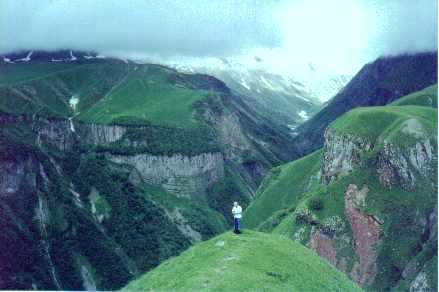 |
| Next to the Georgia Military Highway |
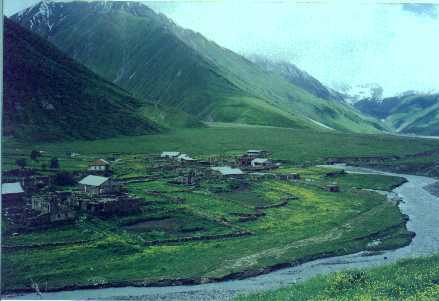 |
| The Village |
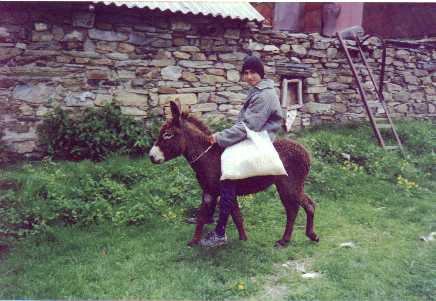 |
| We Ask Directions |
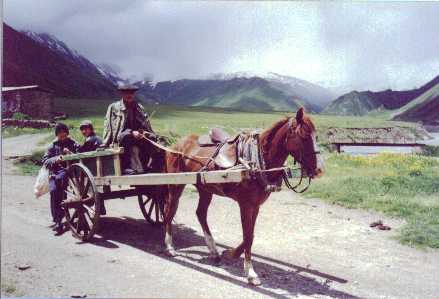 |
| A Farmer |
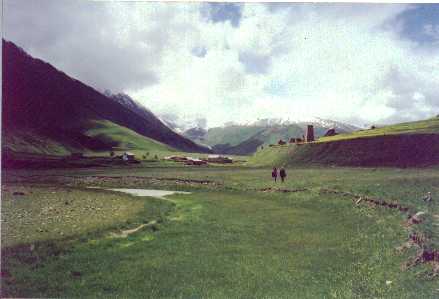 |
| We Walk up the Valley |
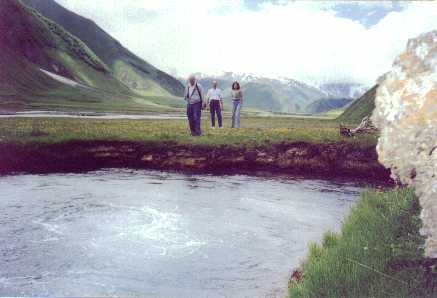 |
| Sulfurous Mineral Water Lake |
 |
| Ruins of a Fortress |
 |
| David Sainsbury Explores the Ruins |
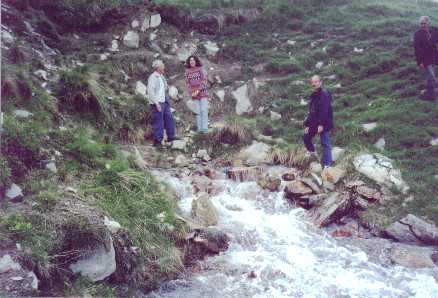 |
| David, Nina and Valerie Drinking from the Mineral Water Spring |
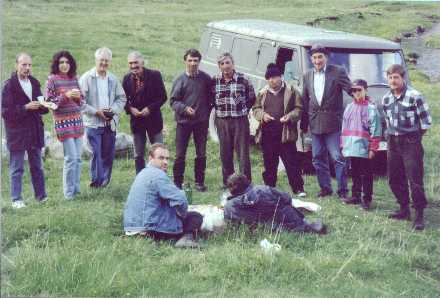 |
| Workers from the Gas Company Invite us to Join Their Picnic |
 |
| Tsminda Sameba |
We drove for three hours up the Georgia Military Road, built by the Russians early in the nineteenth century to connect Russia with Georgia. The Soviets tried to rename it a friendship road or some such thing but the new name never caught. The road follows the Aragvi River for the first two hours, then winds steeply up to 8000 foot Dzvris Pass. The road towers hundreds of feet above the river and most of the time there is no guard rail. The mountains here never lose their snow and they are spectacular.
Just past the top of the pass we saw the Terek River coming in from the West and found a small dirt road paralleling it. Soon we were in a canyon and the narrow road sometimes dropped down right next to the river and other times climbed up the wall. I’m not sure whether it was more worrisome to be inches from the river or to look down the ledge to the river below.
Then suddenly the canyon ended and we were in a wide valley. We got to an intersection and saw a man with a car like mine, so we asked him how to get to the mineral water lake. First he insisted that we take a big bag of cucumbers he had grown, then he pointed us on his way, in good Georgian fashion refusing to take any money for the cucumbers.
Soon we got to a small village (maybe four houses) and asked a couple boys riding donkeys which way to go. They told us to park here, cross the river on the bridge then walk up stream a couple of kilometers. First we had some lunch – bread, cheese, tomatoes, sausage. We walked through the ruins of a fortress then found the lake. It looked as though it was boiling, but the water was cold. The appearance of boiling came from hydrogen sulfide bubbling up – the water tasted like rotten eggs.
Back at the car we drove a bit further up the road and found another ruined fortress up on a hill. A family was grazing sheep nearby and they told us that the valley got even more beautiful if we continued further up. But it was getting late so we decided to head back down the valley and find the house where we would spend the night.
We were almost back to the village where we had eaten lunch when a young man we had seen earlier waved us down and told us that we should follow their car across the field. I didn’t understand where we were going or why because there was no sign of any tracks through the field. Then we saw a large pool with seven big springs gushing water into it. The people there (workers from the gas company on an excursion together) explained that each spring was a different kind of mineral water. This one is good for upset stomachs, this one for headaches and so forth. We sampled all of the water, then our new friends insisted that we join them in several toasts (they had good wine) and eat lots of food. It took us a half hour to extricate ourselves gracefully and head for our guest house.
We didn’t have any trouble finding Mary Sujashvili’s house near the town of Kazbegi because I had stayed there last year. Mary put clean sheets and blankets on not very soft beds for us and cooked us a fine supper. She pointed the way to the out-house with no seat – you have to squat.
In the morning we walked up the mountain to Tsminda Sameba (Holy Trinity) church with a beautiful view of the valley below and the Caucasus Mountains above. On the way up we kept crossing thick cables rusting on the ground and wondered what it had been used for. Later we heard the story. Ten years ago the Soviets had built a cable car from the village below to a platform right next to the church. The Georgians complained that the cable car shouldn’t be so close to the church, that it shouldn’t mar the skyline. But the planners didn’t listen. So when the Soviet Union began to collapse the local Georgians dynamited the upper station of the cable car.
Then we drove down the valley to the Russian border. There were dozens of trucks waiting to clear customs and we decided to turn around before getting stuck in the traffic or the bureaucracy. It was time to drive back to Tbilisi. We all had to be at work on Monday morning.